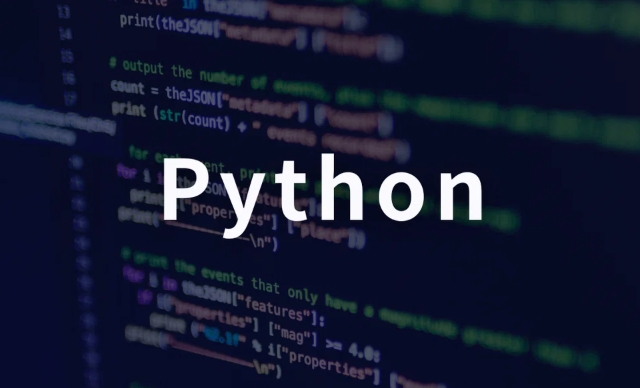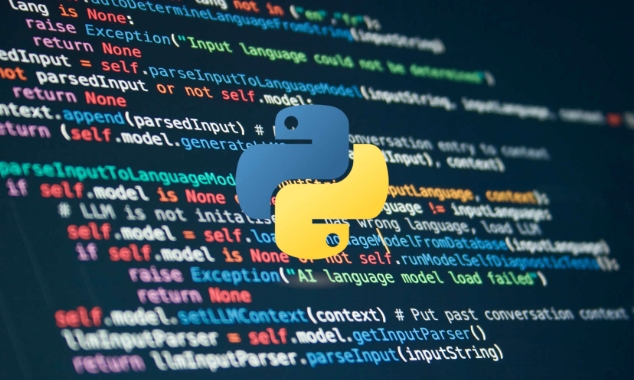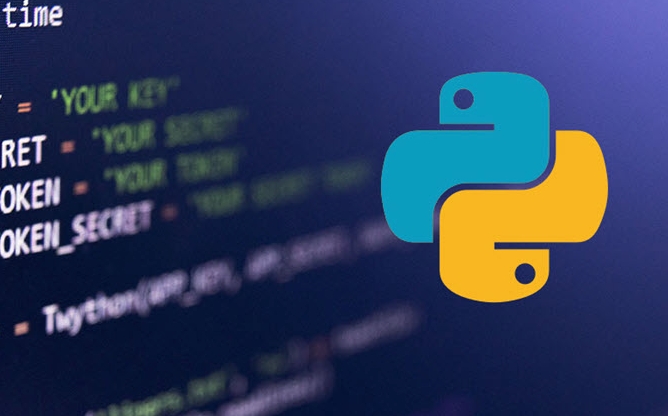def is suitable for complex functions, supports multiple lines, document strings and nesting; lambda is suitable for simple anonymous functions and is often used in scenarios where functions are passed by parameters. The situation of selecting def: ① The function body has multiple lines; ② Document description is required; ③ Called multiple places. When choosing a lambda: ① One-time use; ② No name or document required; ③ Simple logic. Note that lambda delay binding variables may throw errors and do not support default parameters, generators, or asynchronous. In actual applications, flexibly choose according to needs and give priority to clarity.

When writing Python, functions are an infrastructure that cannot be avoided. Both def and lambda can define functions, but their usage scenarios, functions and the design logic behind them are actually quite different. This article does not talk about too theoretical things, but only talks about the situations you will encounter, and helps you choose the right tool.

def is a standard function definition, more comprehensive and clearer
When you need a function that is fully structured, readable, and reusable, the first choice is def . It supports multi-line statements, document strings (docstrings), parameter type annotations, and can also nest other functions or classes.
For example:

def multiply(a, b):
"""Returns the product of two numbers"""
return a * b Such functions are not only easy to test and debug, but also convenient for later maintenance. If you are writing scripts, libraries, or project code, you will hardly make any mistakes with def .
Suitable for using def:

- More than one line of function body
- Have a clear name and purpose
- Need document instructions
- Called by multiple places
lambda is a one-time expression, concise but limited
The original intention of lambda is to quickly write a simple anonymous function, which is often used in places such as sorting and mapping where functions need to be passed as parameters.
For example, this example is very common:
numbers = [1, 2, 3, 4] squared = list(map(lambda x: x ** 2, numbers))
Here we don't need to name functions or complex logic, lambda is very suitable.
But be aware of:
- It can contain only one expression
- No name (unless assigned to a variable)
- Docstring or complex control flows are not supported
- Overuse can reduce readability
So, don't abuse lambda to save a few lines of code . Especially in teamwork, clarity is more important than "cool".
Practical selection suggestions: look at the scene and do not force the rules
Many people are confused about which one to use, but the answer is actually very simple: determine it according to actual needs .
Let’s compare a few typical scenarios:
Custom key when sorting? Can use lambda
sorted(data, key=lambda x: x['age'])
Write a decorator? It's better to use def, because decorators usually have to handle multiple parameters, exceptions, logical branches, etc.
Need unit testing? Then it must be difficult to test with def, lambda.
Write a callback function? If it is simple, you can consider lambda, but if the callback logic becomes complicated, it is best to break it into a def function.
Some small details that are easy to ignore
Although it seems that they are writing functions, some details are easily overlooked:
lambdacan capture variables, but it is late binding, which can sometimes cause pitfalls. For example:funcs = [lambda x: x * i for i in range(3)] print([f(2) for f in funcs]) # The output is not [0, 2, 4], but [4, 4, 4]
The reason is that all lambdas refer to the same variable
iand are not evaluated until the end.defsupports default parameter values, and can do various initialization operations inside the function, which is something that lambda cannot do.defcan be used as a generator usingyield, or asynchronous functions can be written withasync def, and lambda does not support these advanced features at all.
Basically that's it. def and lambda have their own uses. Don’t memorize which one is better. The key is to use it flexibly in different scenarios.
The above is the detailed content of Python def vs lambda deep dive. For more information, please follow other related articles on the PHP Chinese website!

Hot AI Tools

Undress AI Tool
Undress images for free

Undresser.AI Undress
AI-powered app for creating realistic nude photos

AI Clothes Remover
Online AI tool for removing clothes from photos.

Clothoff.io
AI clothes remover

Video Face Swap
Swap faces in any video effortlessly with our completely free AI face swap tool!

Hot Article

Hot Tools

Notepad++7.3.1
Easy-to-use and free code editor

SublimeText3 Chinese version
Chinese version, very easy to use

Zend Studio 13.0.1
Powerful PHP integrated development environment

Dreamweaver CS6
Visual web development tools

SublimeText3 Mac version
God-level code editing software (SublimeText3)

Hot Topics
 How to handle API authentication in Python
Jul 13, 2025 am 02:22 AM
How to handle API authentication in Python
Jul 13, 2025 am 02:22 AM
The key to dealing with API authentication is to understand and use the authentication method correctly. 1. APIKey is the simplest authentication method, usually placed in the request header or URL parameters; 2. BasicAuth uses username and password for Base64 encoding transmission, which is suitable for internal systems; 3. OAuth2 needs to obtain the token first through client_id and client_secret, and then bring the BearerToken in the request header; 4. In order to deal with the token expiration, the token management class can be encapsulated and automatically refreshed the token; in short, selecting the appropriate method according to the document and safely storing the key information is the key.
 How to test an API with Python
Jul 12, 2025 am 02:47 AM
How to test an API with Python
Jul 12, 2025 am 02:47 AM
To test the API, you need to use Python's Requests library. The steps are to install the library, send requests, verify responses, set timeouts and retry. First, install the library through pipinstallrequests; then use requests.get() or requests.post() and other methods to send GET or POST requests; then check response.status_code and response.json() to ensure that the return result is in compliance with expectations; finally, add timeout parameters to set the timeout time, and combine the retrying library to achieve automatic retry to enhance stability.
 Python variable scope in functions
Jul 12, 2025 am 02:49 AM
Python variable scope in functions
Jul 12, 2025 am 02:49 AM
In Python, variables defined inside a function are local variables and are only valid within the function; externally defined are global variables that can be read anywhere. 1. Local variables are destroyed as the function is executed; 2. The function can access global variables but cannot be modified directly, so the global keyword is required; 3. If you want to modify outer function variables in nested functions, you need to use the nonlocal keyword; 4. Variables with the same name do not affect each other in different scopes; 5. Global must be declared when modifying global variables, otherwise UnboundLocalError error will be raised. Understanding these rules helps avoid bugs and write more reliable functions.
 Python FastAPI tutorial
Jul 12, 2025 am 02:42 AM
Python FastAPI tutorial
Jul 12, 2025 am 02:42 AM
To create modern and efficient APIs using Python, FastAPI is recommended; it is based on standard Python type prompts and can automatically generate documents, with excellent performance. After installing FastAPI and ASGI server uvicorn, you can write interface code. By defining routes, writing processing functions, and returning data, APIs can be quickly built. FastAPI supports a variety of HTTP methods and provides automatically generated SwaggerUI and ReDoc documentation systems. URL parameters can be captured through path definition, while query parameters can be implemented by setting default values ??for function parameters. The rational use of Pydantic models can help improve development efficiency and accuracy.
 Python for loop with timeout
Jul 12, 2025 am 02:17 AM
Python for loop with timeout
Jul 12, 2025 am 02:17 AM
Add timeout control to Python's for loop. 1. You can record the start time with the time module, and judge whether it is timed out in each iteration and use break to jump out of the loop; 2. For polling class tasks, you can use the while loop to match time judgment, and add sleep to avoid CPU fullness; 3. Advanced methods can consider threading or signal to achieve more precise control, but the complexity is high, and it is not recommended for beginners to choose; summary key points: manual time judgment is the basic solution, while is more suitable for time-limited waiting class tasks, sleep is indispensable, and advanced methods are suitable for specific scenarios.
 Python for loop over a tuple
Jul 13, 2025 am 02:55 AM
Python for loop over a tuple
Jul 13, 2025 am 02:55 AM
In Python, the method of traversing tuples with for loops includes directly iterating over elements, getting indexes and elements at the same time, and processing nested tuples. 1. Use the for loop directly to access each element in sequence without managing the index; 2. Use enumerate() to get the index and value at the same time. The default index is 0, and the start parameter can also be specified; 3. Nested tuples can be unpacked in the loop, but it is necessary to ensure that the subtuple structure is consistent, otherwise an unpacking error will be raised; in addition, the tuple is immutable and the content cannot be modified in the loop. Unwanted values can be ignored by \_. It is recommended to check whether the tuple is empty before traversing to avoid errors.
 How to parse large JSON files in Python?
Jul 13, 2025 am 01:46 AM
How to parse large JSON files in Python?
Jul 13, 2025 am 01:46 AM
How to efficiently handle large JSON files in Python? 1. Use the ijson library to stream and avoid memory overflow through item-by-item parsing; 2. If it is in JSONLines format, you can read it line by line and process it with json.loads(); 3. Or split the large file into small pieces and then process it separately. These methods effectively solve the memory limitation problem and are suitable for different scenarios.
 What are python default arguments and their potential issues?
Jul 12, 2025 am 02:39 AM
What are python default arguments and their potential issues?
Jul 12, 2025 am 02:39 AM
Python default parameters are evaluated and fixed values ??when the function is defined, which can cause unexpected problems. Using variable objects such as lists as default parameters will retain modifications, and it is recommended to use None instead; the default parameter scope is the environment variable when defined, and subsequent variable changes will not affect their value; avoid relying on default parameters to save state, and class encapsulation state should be used to ensure function consistency.






